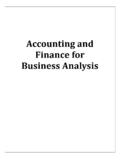Transcription of 17 Things You Should Be Doing Right Now To …
1 17 Things You Should Be Doing Right Now To Reduce Outstanding Accounts Receivable An Executives Guide to Credit & Collections management (CCM) 17 Things You Should Be Doing Right Now To Reduce Outstanding Accounts Receivable Page 2 of 27 share this white paper | Table of Contents Introduction to Credit & Collections management .. 3 What Is CCM? .. 3 Why CCM? .. 4 Who Needs CCM? .. 4 CCM Benefits .. 4 17 Things You Should Be Doing Right Now .. 5 1. Create a Plan .. 5 2. Provide Accurate & Timely Information .. 8 3. Develop KPIs .. 9 4. Define Roles .. 11 5. Standardize Messaging .. 12 6. Document Activities .. 13 7. Define Dispute Resolution Procedures .. 14 8. Centralize Data & Communications .. 15 9. Manage Your Resources .. 16 10. Score Customers Using Cost of Credit .. 18 11. Be Proactive.
2 18 12. Focus on Key Accounts .. 19 13. Automate Business Processes .. 20 14. Secure Financial Information .. 22 15. Involve Your Sales Team .. 23 16. Escalate Trouble Accounts .. 24 Conclusion .. 26 Additional Resources .. 27 About e2b teknologies .. 27 17 Things You Should Be Doing Right Now To Reduce Outstanding Accounts Receivable Page 3 of 27 share this white paper | Introduction to Credit & Collections management What Is CCM? Credit & Collections management (CCM) is a suite of integrated business applications that extend a company s accounts receivable and accounting system to facilitate credit management , billing and invoicing, remittance processing, dispute management , and collections processes. According to Paystream Advisors, CCM (also known as RCM) system functionality varies widely by publisher but typically supports six key functional areas credit facilitation, billing and invoicing, remittance processing, collections management , dispute resolution, and reporting and analysis.
3 Credit Facilitation, which includes credit scoring, credit application processing, reference checking, ordering credit reports from credit bureaus, financial statement analysis, new account approval, order approval, credit limit decisions, accounts receivable portfolio monitoring and credit risk management . Pre-Bill management and e-Invoicing, which involves identifying invoice errors, ensuring vendor compliance, generating an accurate invoice; generation, transmittal and distribution of invoices and statements; trade promotion planning; contract management ; Electronic Invoice Presentment and Payment (EIPP); and Electronic Bill Presentment and Payment (EBPP). Remittance Processing, which typically includes financial EDI (Electronic Data Interchange), EFT (Electronic Funds Transfer including ACH, Automated Clearing House), auto-cash algorithms and routines, payment-to-invoice matching, cash settlement, cash forecasting, as well as credit card processing and matching already-on-account credits, debits, and unapplied payments or adjustments.
4 Collections management , which includes workflow automation driven by a collection strategy engine, prioritized collection activities, integration of A/R data, a reminder system, activity logs, account and invoice level notes, integrated communication tools, faxing capabilities, e-mail, invoice reprinting, other forms of data export, payment plan calculators, imaging tools, and auto-dialers. Dispute management , which includes dispute and deduction resolution, chargeback processing, exception reporting with automated escalation processes, a routing engine, collaboration tools, document sharing, and tools for root cause identification. Reporting and Analysis, including cash forecasting, dashboards, email alerts, query capabilities, out-of-the-box reports, report generators, workload balancing, exception reporting, cycle time analysis, portfolio risk management , customer intelligence, and month end reporting tools.
5 17 Things You Should Be Doing Right Now To Reduce Outstanding Accounts Receivable Page 4 of 27 share this white paper | Why CCM? According to Dunn & Bradstreet and other credit institutions, accounts receivable is typically the first or second largest asset for most businesses. Accounting and enterprise resources planning (ERP) business applications include accounts receivable modules but most often provide only minimal tools to support collections and dispute management processes. Who Needs CCM? Companies in many different industries struggle to manage outstanding accounts receivable. The Credit Research Foundation s National Summary of Domestic Trade Receivables 2008 Annual Bad-Debt Report estimates that allowances for uncollectable receivables for 2008 were of total receivables.
6 This represents an expected, albeit slight increase of over 2007 which is likely due to economic conditions. Industries with the highest median percentage of uncollectable receivables included manufacturing, specialty trade contractors, business services, engineering services, and wholesale distributors. Manufacturing seemed to be impacted more than other market segments with 9 of the top 16 highest median values represented by different manufacturing industries. The CRF report On Whose Terms? published in 2006 indicates that approximately 17% of business customers do not adhere to supplier credit terms. Further, another CRF report showed that most delinquent companies delay or deny payment not due to lack of money or poor cash flow (39%) but actually due to compliance or administrative problems (61%) such as incorrect invoices or receiving the invoice too late to process payment on established credit terms.
7 These findings show that companies in many different industries can benefit from an integrated CCM application coupled with formalized business procedures to streamline credit and collections activities. CCM Benefits There are many benefits to implementing a CCM application to extend existing accounts receivable functionality and processes. Some of these are reduced transaction costs, improved cash flow and cash forecasting, optimized staff productivity, and reductions in bad debt and write-offs. Companies who automate collections and nothing more are realizing: 10 to 20 percent reductions in daily sales outstanding (DSO) 25 percent reductions in past due receivables 15 to 25 percent reductions in bad debt reserves Return On Investment (ROI) in as little as 2 months and usually in no more than 6-9 months (Source: Paystream Advisors) 17 Things You Should Be Doing Right Now To Reduce Outstanding Accounts Receivable Page 5 of 27 share this white paper | 17 Things You Should Be Doing Right Now There are many Things that financial professionals feel they need to do.
8 Many have seen their own departments cut to the bone due to some of the worst economic conditions in decades. Still, there are some fundamental and easily-deployed tactics that are sometimes forgotten in the rigmarole of daily activities tactics and concepts that every credit department can use to reduce outstanding receivables. This white paper highlights these 17 points with descriptions and suggestions related to implementation of each strategy and examples to illustrate how they can be integrated with manual and automated systems such as credit and collections management (CCM) applications. 1. Create a Plan The first step toward improving credit and collections is to develop a formalized policy and plan covering rules, regulations, and procedures to manage daily operations, approval workflow, and resources.
9 The ..many organizations have implemented ERP solutions that are woefully inadequate in terms of receivables and collections management (RCM) functionality. These enterprise systems often replaced legacy or home-grown systems better suited to credit and collections management . As a result, RCM solutions are increasingly critically important to maintain proficiency in the corporate financial supply chain of accounts receivable (A/R) management . The inadequacy of most A/R processes is particularly apparent with corporate management s call for greater system integrity and more accurate reporting. The application of SOX standards is continuing to generate business and system improvement pressure as well. (Source: Paystream Advisors) 17 Things You Should Be Doing Right Now To Reduce Outstanding Accounts Receivable Page 6 of 27 share this white paper | goal for a Credit Plan is to clearly define these elements so that employees conform to documented steps and procedures designed to improve all related business processes.
10 The Credit Research Foundation estimates that only 20% of credit departments have formalized policies. Many companies struggle to formalize policies due to ad-hoc credit management from salespeople, lack of critical financial information, or simply due to time constraints and higher priority projects. A credit plan Should have a dramatic impact on the overall financial health of your business. It provides a documented roadmap that aligns corporate goals with business procedures. The credit plan Should help your organization accomplish many goals including reduction in bad debt and write-offs as well as improvements in sales to cash payment cycles and improved profitability. The plan Should include a mission statement or well-defined company goal. It Should also identify all employee roles and systems in the organization that are directly or indirectly related to the credit and collections process.





